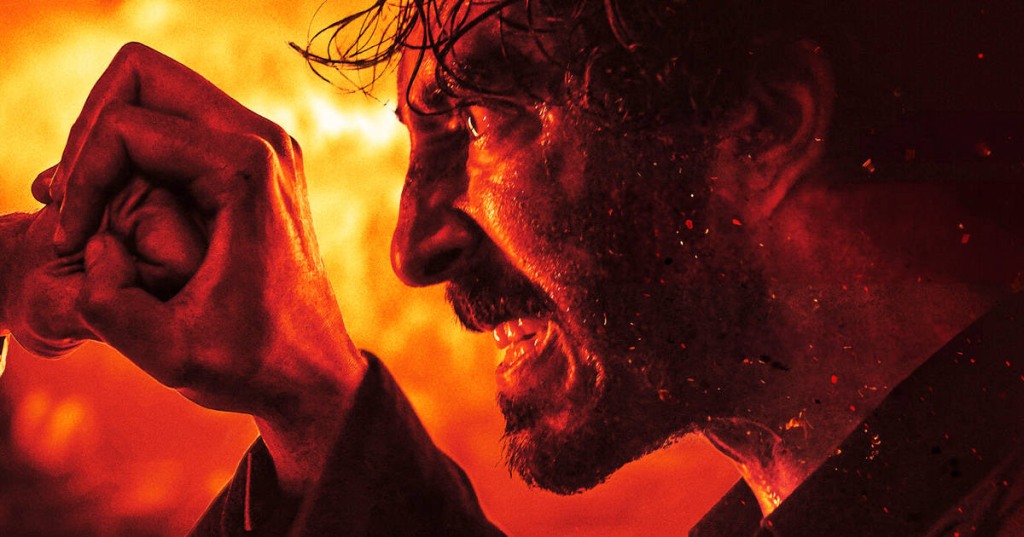Satvika Nitya / A&C Editor
It is rare to hear that an action film has made people feel connected, represented and emotional because of the genre’s stereotypical bend toward violence and thrill. But, Dev Patel’s directorial debut “Monkey Man” received a standing ovation at the South by Southwest film festival, along with its current second place in the box office after theatrical release.
Through broken bones, eye infections, shooting location losses and pandemic-induced cuts in cast and crew, Patel’s passion project where he played the role of the director, screenwriter, lead actor and producer made it to theaters across the U.S. on April 5.
Inspired by the legend of the Hindu deity Hanuman, the film is centered around the revenge story of an unnamed fighter who is called “Kid” in the credits. As a true hustling underdog who navigates the large economic gap in the fictional city of Yatana, India, we see Kid turn into a killing machine who slithers into the world of higher-ups to get revenge on leaders who kill his mother and steal his homeland.
“Monkey Man” is gruesome, bloody and graphic with many moments that might make you want to look away. However, the gore feels justified, because of the movie’s strong connection to flashbacks and origin stories. Patel gradually builds the motive behind Kid’s turn to violence, before finally revealing the ghastly atrocities he witnesses as a kid that lend a hand in the revenge arc.
USD senior Hasan Iqbal kept up with the making of the movie and was excited to see it. He talked about his reaction to watching the movie.
“I feel like this movie had a lot of heart in it which is what is lacking from other mainstream films these days,” Iqbal said. “Usually the climax of bigger movies is this giant CGI fight where you don’t really know what’s happening except who the good guys are. [Monkey Man] is a smaller and more focused story. The storytelling was very proficient and smart. Whether or not you fully understand the story of Hanuman and ancient folklore that is interwoven, you would still feel connected to the story.”
The movie also covers a wide range of political and social issues in its undertones. Patel ties in themes prevalent in India’s social climate like religious persecution, political divisions, caste systems, violence against women and police corruption. The world of “Monkey Man” is so closely tied to reality that India’s Central Board of Film Certification has flagged down the movie and staggered its release in India, fearing the effect it may have on the sentiments of the Indian audience. But, whether you have knowledge on the political climate of India or not, the themes covered in the movie are easy to comprehend and add to the stakes of the plot.”
The action sequences in “Monkey Man” are captivating and impressive by themselves, especially because the film had about 10 percent of the budget that other blockbuster action films with similar praise have. With a budget of $10 million, the movie pulled out all the stops it could within the already saturated genre. Patel gave the audience something new to watch within an industry where stunts and sequences are often repeated, whether that be through the innovative choice of weapons used or through the unique fight choreography performed.
During several interviews promoting his film, Patel talked about how his influences have ranged from Hollywood action, Bruce Lee, Jackie Chan, Korean Cinema and Bollywood. “Monkey Man,” in Patel’s words, is “a weird cocktail” of everything he loves from different action fields from different countries.
USD senior Sarah Sanchez watched the movie in theaters this past weekend and talked about her reaction to the movie.
“I loved it and it was surprising for me because I’m not an action girl,” Sanchez said. “It just goes to show how good the movie is. I just felt really connected to the main character. I felt like his ride or die and wanted him to succeed and was rooting for him the entire time. I was captivated.”
Nothing about the process of making this movie was smooth sailing. With its original location for filming set in India, Patel had to adapt to the incoming pandemic and move the location to Indonesia, where he and 450 cast and crew members created a bubble to film in while staying safe from the epidemic. The film originally had the Hollywood action hit “John Wick’s’’ stunt team to assist with the action. With the threat of the pandemic, Patel lost not only his stunt crew, but also his production designer as well as his gaffer who died due to a heart attack. So responding to these challenges and closing borders, he had to adapt and find new people to help him on platforms like YouTube.
Patel also put his physical safety on the line while filming “Monkey Man.” He broke some toes during fight training two weeks before filming, and while shooting the first action sequence of the film, he broke his hand. The nail that was put into his hand to help mend the break could not bear more than one pound of weight put on it, but since Patel did not want to delay the making of the film any longer, he persevered and continued shooting, changing the entire fight choreography to one-handed sequences.
Closing borders also meant the lack of props and equipment for “Monkey Man.” So, when there were camera malfunctions, everything from makeshift camera equipment tied to ropes to act as pendulums to iPhones and go-pros were used for filming. With the limited cast, Patel had to not only put every accountant, tailor, light, sound and camera operator on screen but also change the appearances of the eight stuntmen they actually had, to make it seem like they had more people than they did.
However, Patel deemed this process as inspirational because every setback provided more opportunities for creativity.
USD senior Stella Schneider, who has a deep passion for films, talked about how hearing about the process of making “Monkey Man” inspired her as a young filmmaker.
“It shows that you need commitment and persistence and this film is a great touchstone on what it means to be a filmmaker,” Schneider said. “For me film is storytelling at its highest form and storytelling requires so much creativity and that doesn’t just mean the ideas you come up with, it’s also how you adapt, persevere and continue to grow as a filmmaker. And this film has gone through a lot.”
Throughout the ordeals that Patel faced making this film, his passion for the project is what drove the film to completion. In an interview with Kelly Clarkson, Patel shared how growing up in London, he had felt ashamed of his Indian heritage, and once he started acting in movies like “Slumdog Millionaire” and “Lion,” he got more in touch with his culture. Patel always loved action films, but the only roles he was offered in that genre were the funny sidekick or the guy who hacks mainframes. He wanted more and decided that for his directorial debut, he wanted not just to double but triple down on cultural representation.
Even after completion, the movie saw an uphill battle. Initially bought by Netflix in 2021, the film sat on a shelf and never saw the light of day until Jordan Peele saw the film. Peele’s production company, coincidentally named Monkeypaw Productions, and Universal bought the film from Netflix and saw that it got a theatrical release in 2024. The movie has now been out in theaters for two weeks, with many raving reviews. Made about the story of an underdog who goes through hell and back, “Monkey Man” is an action movie that was truly made only after going to hell and back.
Photo courtesy of @_shauryachawla/Instagram





Leave a comment